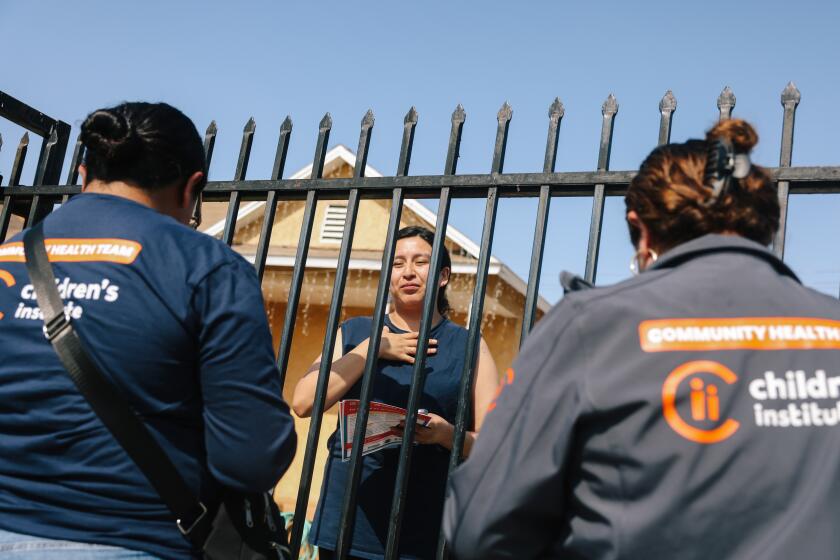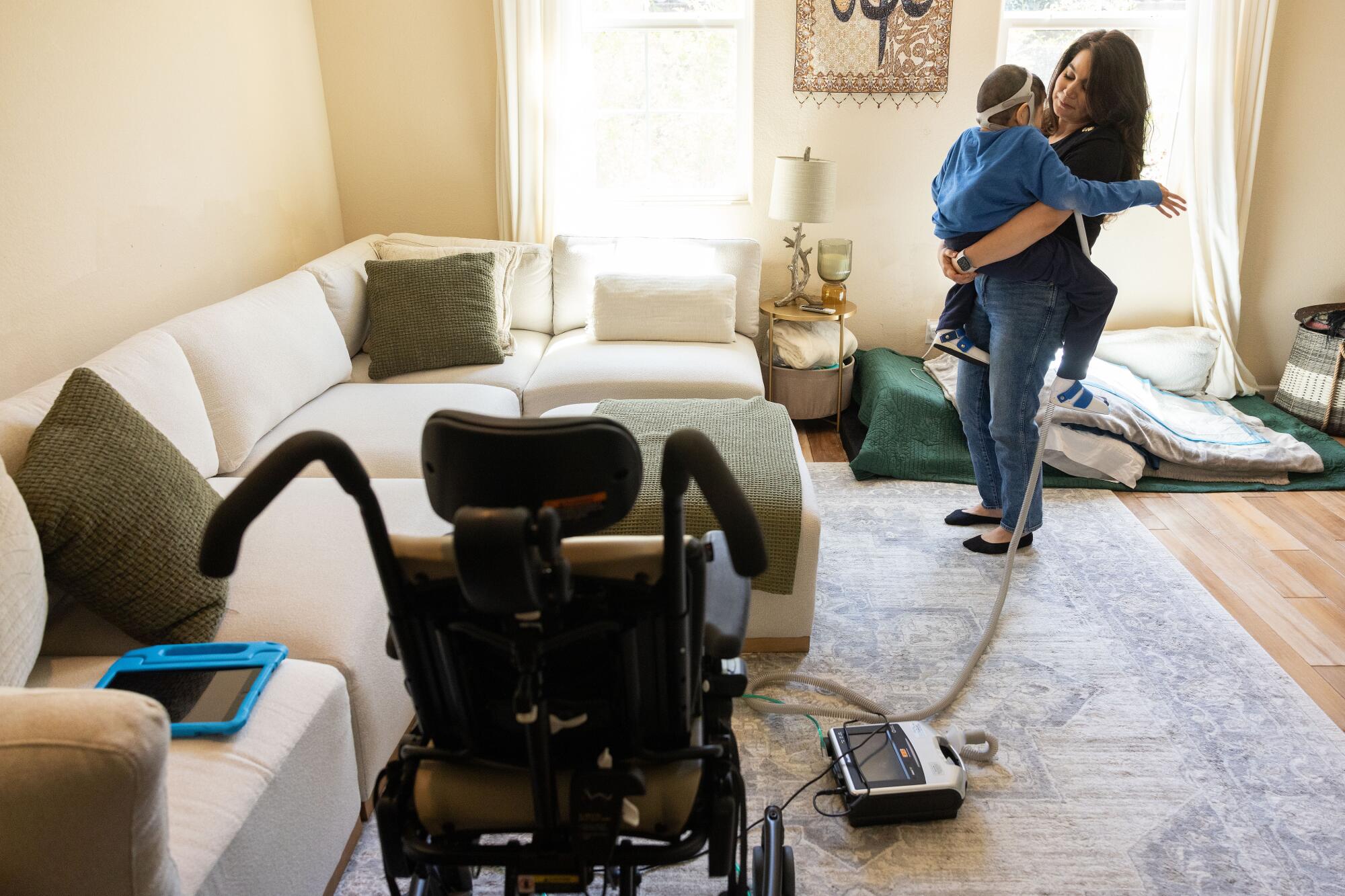
- Share via
Lyla Abuebaid needs to check on her 5-year-old son through the night to make sure he keeps breathing.
Sayfideen has a rare and serious syndrome that leaves him unable to walk. He relies on a ventilator and has to be monitored 24 hours a day, his mother said. Nurses once helped handle his care at home.
But for months now, that work has instead fallen to his mother, who is also juggling her job as a project manager.
“I’m not functioning,” the San Jose resident said. “I’m not doing well at work. I’m not doing well at home.”
Abuebaid said it feels as though she has to “beg the state for services which he absolutely deserves.”
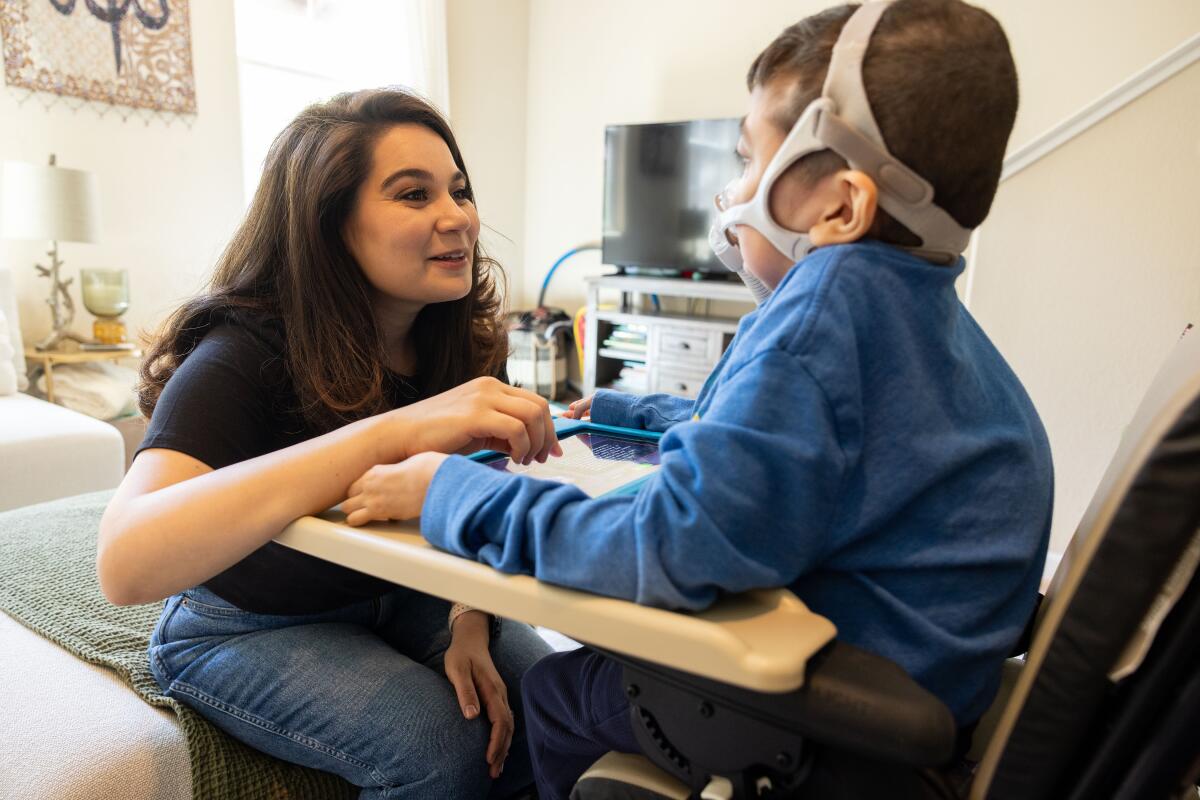
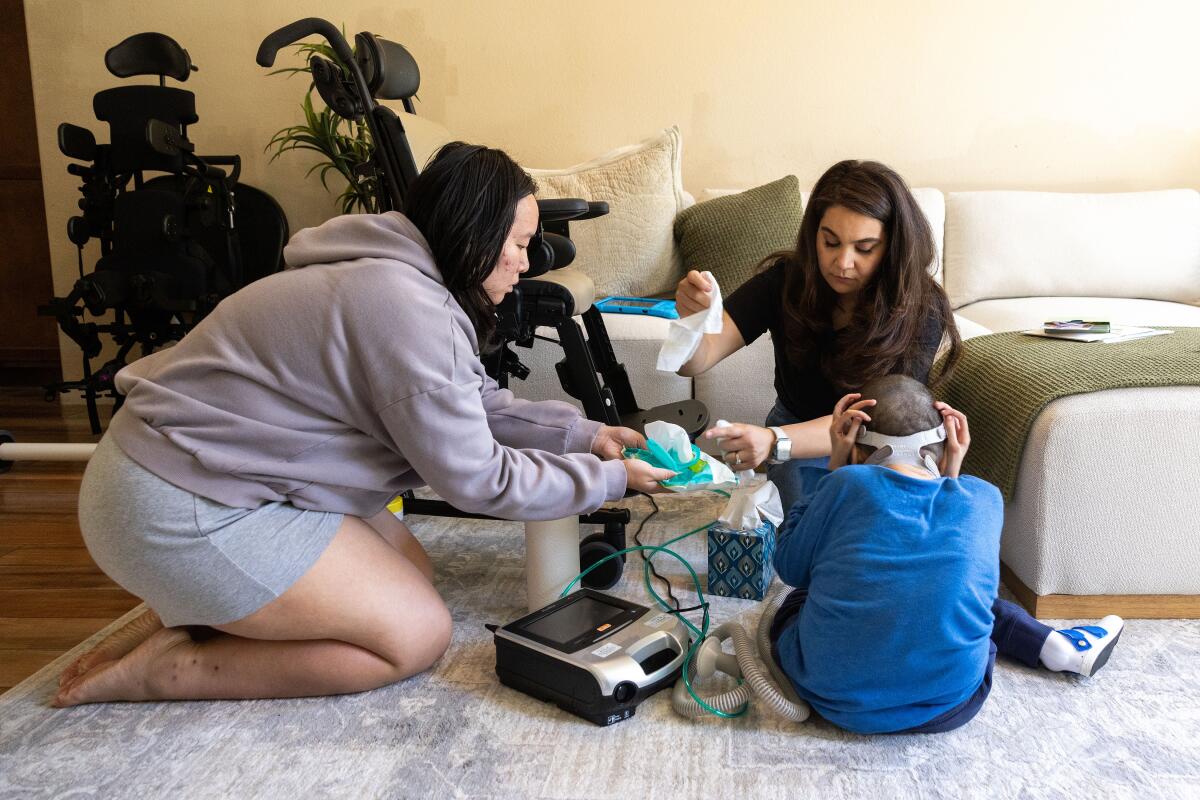
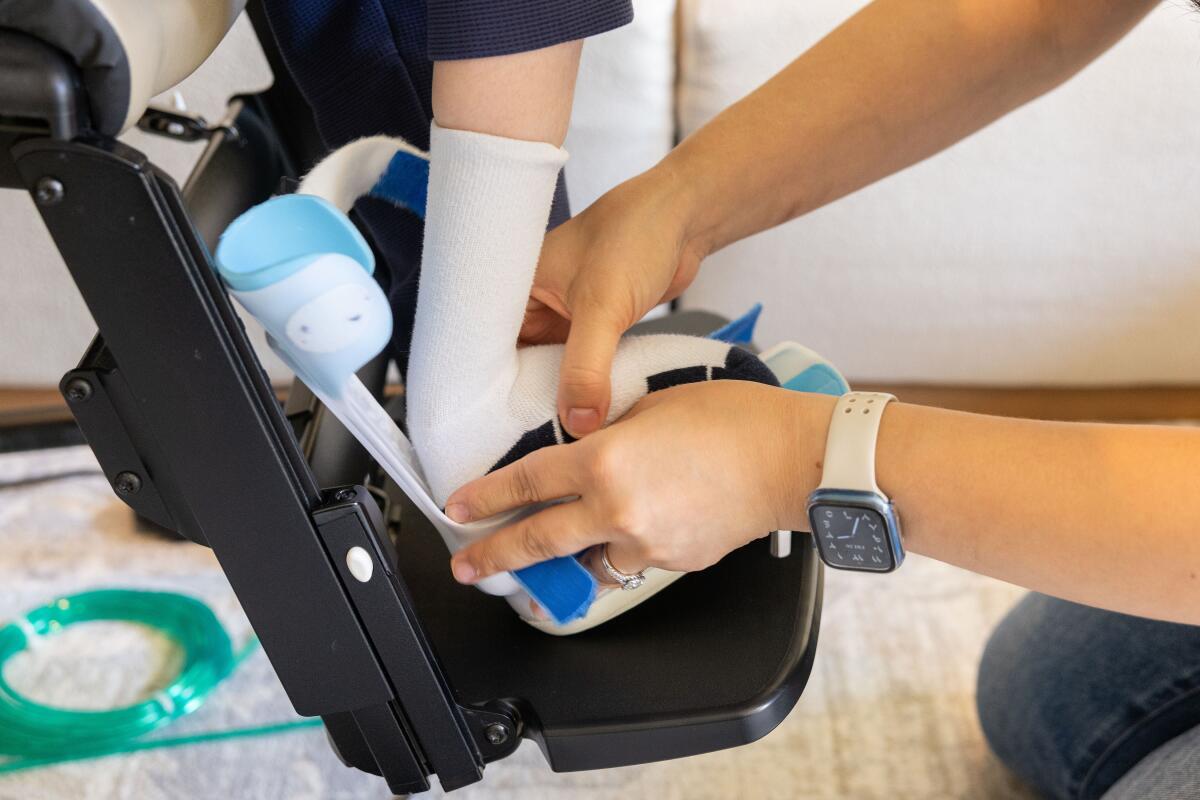
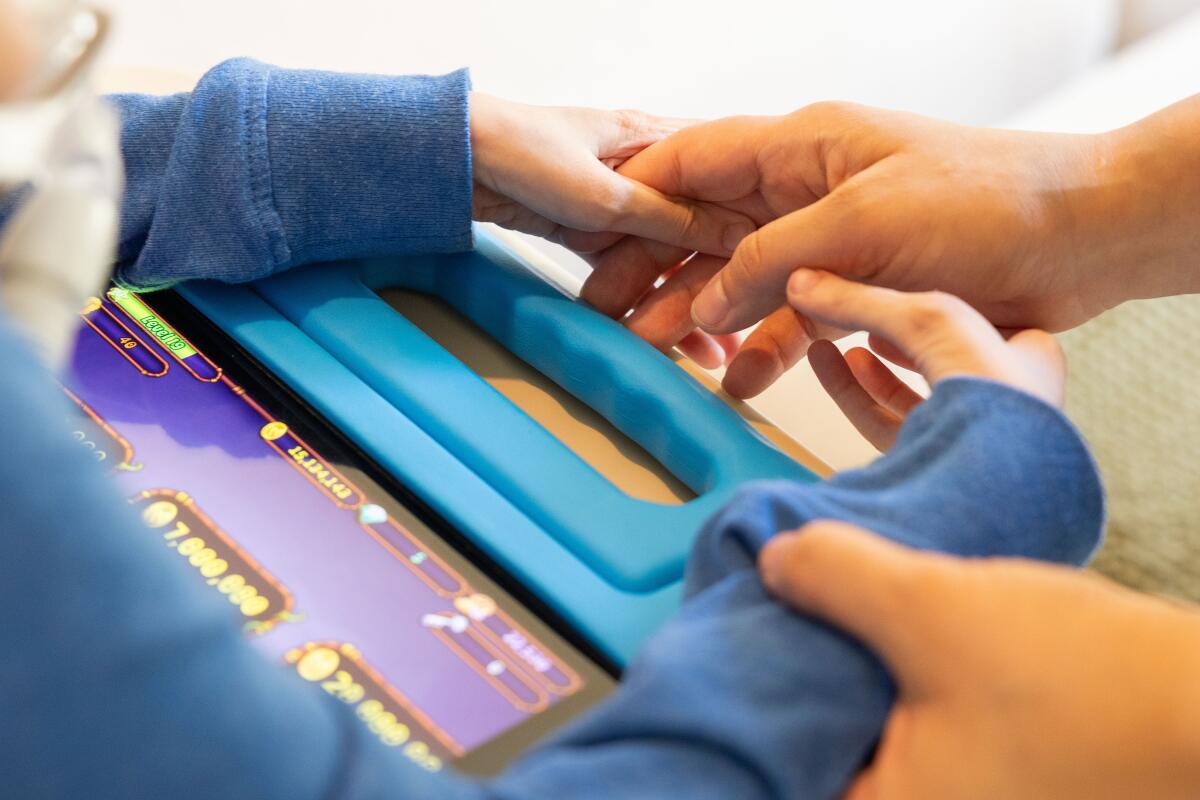
Lyla Abuebaid has waited for months for help from the state with the care of her son. She sometimes gets help from a family friend, but 5-year-old Sayfideen needs a fulltime caregiver. (Peter DaSilva / For The Times)
She is among thousands of Californians who have been trying to get Medicaid benefits for services to help medically vulnerable people remain at home through the Home and Community-Based Alternatives waiver.
Demand for the HCBA waiver, which helps people who might otherwise have to live in nursing facilities, has far outstripped the available spots. Last summer, California stopped accepting applications for the program as it hit an enrollment cap. Amid an outcry from disability rights advocates and families, California got federal approval to gradually add 7,200 slots over four years to eventually serve more than 16,000 people at a time.
Yet thousands of Californians remain on the wait list. As of June, more than 4,900 people were waiting, according to the Department of Health Care Services — more than twice as many as last summer.
When people have to wait, either “aging adults or disabled people who need services are going without them, or family caregivers are left to fill in the gaps,” said Nicole Jorwic, chief of advocacy and campaigns for Caring Across Generations. Some could end up in nursing facilities “because there just aren’t alternatives.”
L.A. County’s public health department is sending teams to knock on doors in neighborhoods like Watts, Pacoima and Lincoln Heights to ask people what they need.
Disability rights advocates had warned the state last year that the planned increase in slots would not clear the existing wait list for years, let alone reach more Californians who might find themselves in need of care as they face unexpected illness or injury.
“I don’t know that they’ve done anything to solve the problem,” said Clovis resident Sarah Scharnick, who first spoke with The Times about the wait list last fall and is still on it. Her husband requires round-the-clock care, including being turned at night to prevent bedsores, after a bicycle crash.
Long hours of nursing care at home are not typically covered by private insurers, forcing many families to resort to placing their loved ones in nursing facilities or to shoulder their care themselves, advocates say. Abuebaid said her private insurance would not cover her son’s nursing care. He had previously gotten assistance through Medi-Cal, the California Medicaid program, then lost his coverage.
Paying for such care out of pocket “would bankrupt a millionaire,” said Katelyn Ashton, executive director of Loretta’s Little Miracles, which cares for medically fragile children. For many families unable to access the waiver, “their only option is to quit their job and provide that care themselves at home.”
State officials said that with the added slots, nearly 10,800 people could be in the program at a time this year. Despite the demand for the program, however, more than 1,500 HCBA slots remained unfilled as of June, according to the healthcare services department.
The reason: The department said it is currently releasing only about 200 slots a month. Throwing open all the slots at once, it said, “would cause administrative backlogs” for both local agencies that take applications and for the state, “due to the high number of applications to process.” The state agency said it has limited resources, “including staff, to review the existing volume of enrollment packets.”
It has seven nurses who work on reviewing the enrollment packets — only two of them doing so full time — and four other staffers who assist with the wait list, the agency said. DHCS said the process can also be delayed by scheduling difficulties at local agencies that field applications.
The lag has alarmed groups like Disability Rights California and Justice in Aging. U.S. Rep. Nanette Diaz Barragán (D-San Pedro) said she had called for Gov. Gavin Newsom “to put the resources there to make sure that they’re filling slots as quickly as they can.”
“Putting people in this program saves the state money in the long run,” she said.
Providing such care for someone at home is far less expensive than moving them into a nursing home, state figures show: The Department of Health Care Services estimated in a May report that the average nursing facility costs more than $134,000 annually, compared with roughly $53,000 for each person in the program.
“We step over a dollar to pick up a dime a lot of times,” said Jim Frazier, a former California Assembly member and director of public policy for the Arc of California, which advocates for people with intellectual and developmental disabilities. “We don’t look at the long-term cost savings.”
The healthcare department estimated 40% of people accessing the program were not coming from nursing homes, but “from the community.” Researchers have found that longer waits for such programs can prove costly even if people aren’t already living in institutions: In Iowa, older people were more likely to end up spending time in a nursing home within a few years if they had applied for such waivers when waits were long, researchers found.
The VA uses physical fitness and camaraderie to help older veterans cope amid loneliness, hearing loss and other conditions — and to help prevent suicides.
The logjam has also undercut efforts to help homeless people who are medically vulnerable, advocates said. In the Bay Area, Cardea Health Chief Executive Alexis Chettiar said the unhoused clients that her nonprofit serves “are too sick to live in a home without support, they are disallowed from shelters because they may be incontinent or have malodorous wounds,” and nursing homes are often unwilling to take them.
Her nonprofit has instead worked to enroll them in the HCBA program as they are housed. The group said it has saved over $7 million annually by reducing emergency room visits, hospitalizations and other medical costs for such patients.
“It really works,” Chettiar said. “Or I should say — it was working really magnificently until we hit the cap.”
More than 90 of their clients are now on the waiting list, where some have languished over a year and a half. Cardea Health has been footing the bill for their care, but Chettiar said it cannot do so forever: It has relied on a few years of “seed funding” from local governments when it starts services at a site, but had planned to get patients onto the HCBA waiver for continued care.
As California releases slots, it has been prioritizing people under the age of 21, as well as people who have already been stuck for months in health facilities, among others. The Department of Health Care Services said opening up slots month by month has allowed it to continuously ensure that those applications go to the front of the line. Abuebaid said that after months of waiting, her child had recently been scheduled for an intake appointment.
For Californians who do not fit those criteria, however, the waits can be especially punishing. As of June, more than 90% of those on the HCBA wait list were not in the priority groups, according to the state.

Among them is Jenina Marik, who was diagnosed roughly a year and a half ago with the neurodegenerative disorder ALS. Within a few years, the 40-year-old Valencia woman went from running a half-marathon, operating her wedding photography business and corralling her young sons to being unable to feed or dress herself.
Her husband, Tyler Marik, turned to a caregiving service to assist her while he went to work, but “I was going broke.” After months of struggle, the family eventually got some help through a government program for in-home care, but “it’s nowhere near enough.”
Because Jenina, now quadriplegic, still needs care throughout the night, “I get maybe five hours of sleep a night. ... And when I’m tired that can compromise her safety,” Tyler Marik said.
The HCBA waiver could afford them more care, but it’s been nearly a year since they applied. Marik fears he may have to stop working if nothing changes. Moving his wife into a facility “would be a nightmare,” he said.
“That would be even worse than ALS.”
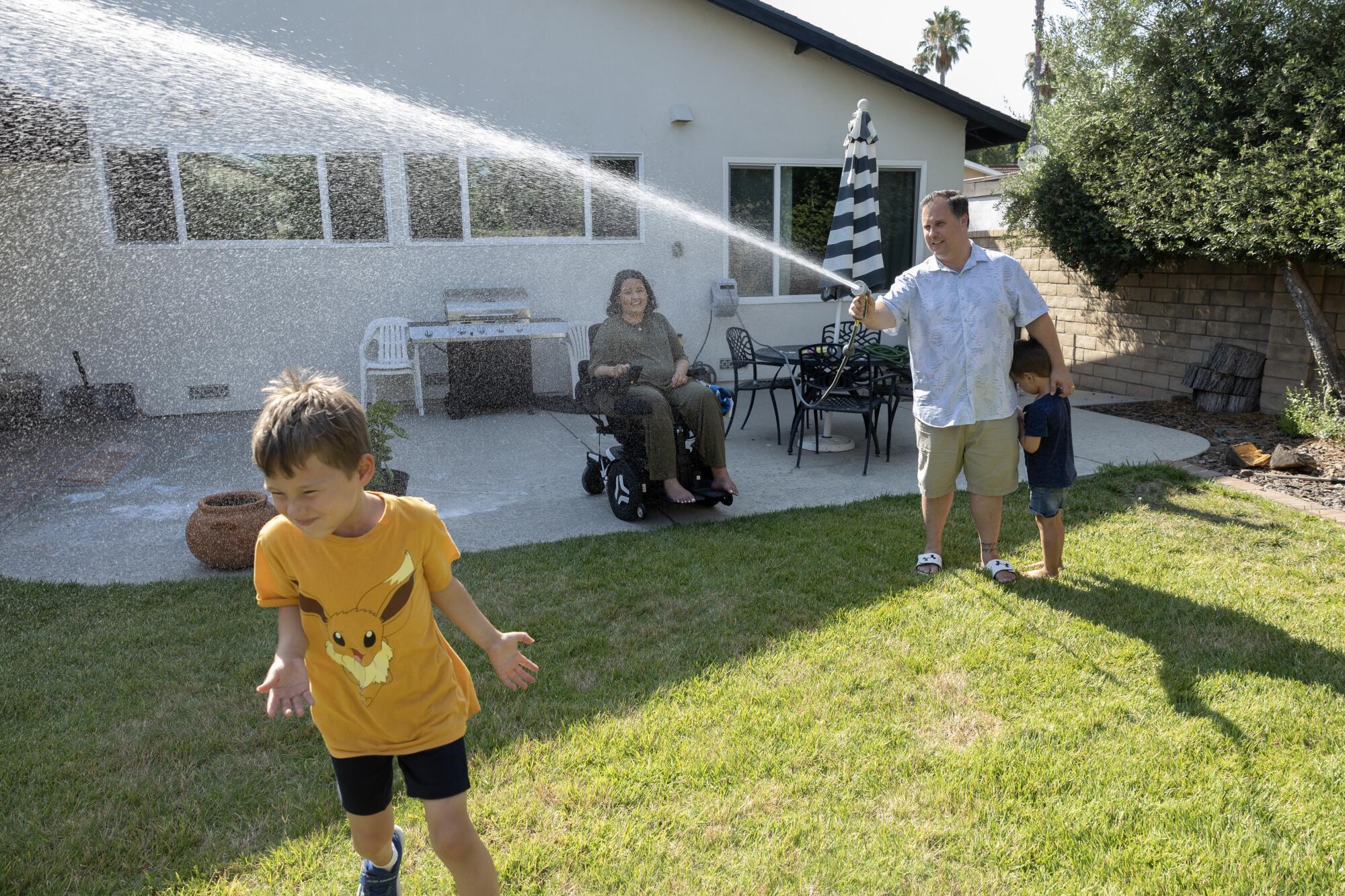
More to Read
Sign up for Essential California
The most important California stories and recommendations in your inbox every morning.
You may occasionally receive promotional content from the Los Angeles Times.
